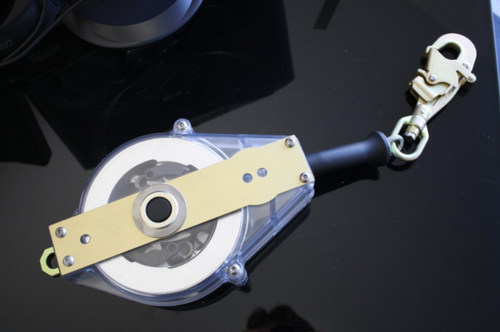Inspecting Your Fall Protection To Meet ANSI Z359 Standards
While OSHA still establishes the laws surrounding workplace fall protection and is tasked with enforcing them, many organizations look to the American National Standards Institute (ANSI) for the most current safety procedures and best practices. The new(ish) Z359.1 standards from ANSI are an attempt to create a more holistic fall safety program. One of the biggest differences between these new specifications and the existing OSHA fall safety requirements are regular inspections of all fall safety equipment.
ANSI Z359 attempts to minimize on the job injuries caused by inadequate fall protection, improperly used equipment, inadequate training, and damaged or worn-out safety gear. One of them major themes in this comprehensive directive involves regular inspection of all fall protection equipment with special emphasis put on SRLs, harnesses, and lanyards. These directives fall under Z359.1 and also include selfenergy absorbers, anchorage connectors, fall arresters, and components of the equipment including connectors, rope, straps, thread and thimbles.
These standards only applies to fall arrest equipment used in general industry and not to the construction industry. The construction industry currently has a separate set of standards.
New inspection requirements for self-retracting lifeline devices depend on the amount of use the unit sees. SRLs that are used infrequently, say for occasional confined space entry, or as rescue equipment, and that have good storage conditions that keep it somewhat clean, dry, and away from corrosive or harmful chemicals, only need to be inspected annually by a competent person on staff. A factory-authorized inspection would need to be performed every 2-5 years (but never longer than required by the manufacturer).
For fall limiters and SRLs that see moderate to heavy use, as in residential construction, in warehouses, or in the utility trades, inspection needs to take place more frequently. House inspection needs to take place semi-annually to annually, and sent out for factory inspections at least every 1-2 years (but again, never longer than required by the manufacturer).
Finally SRLs that are in continuous use, or that are used in severe or corrosive environments such as oil and gas industries, mining, or commercial construction, need to be inspected every 3 to 6 months by a competent person (as defined by OSHA). These workhorses need to be sent in for a factory inspection at least annually (and, for the last time, as always, never longer than required by the manufacturer).
Obviously good record keeping will be critical with the new ANSI standards. And at least in theory, that paperwork will be pulled out for inspection far less often, since the belief is these new safety efforts will greatly reduce the number of injuries. While the Z359 standards certainly put a much greater level of responsibility and organization on the employer, it is believed this added attention to detail with regard to fall safety will improve the overall wellness of workers, and decrease workers compensation claims and injury over time.
If you have questions about ANSI Z359, or compliance with the new regulations, please give us a call at 1-800-829-9580.
Recent Posts
-
Promoting Safety: National Work Zone Awareness Week is April 15-19, 2024
Each year, the National Work Zone Awareness Week (NWZAW) places the spotlight on the importance o …Apr 11th 2024 -
Understanding 4 Gas Monitors: How They Work & Why They Are Important
In today’s increasingly dynamic industrial landscape, 4 gas monitors have emerged as critical com …Apr 8th 2024 -
April Showers Require Workers to Wear Hi-Vis Safety Rain Gear
While April showers bring May flowers, they also bring challenges, particularly for those working …Apr 1st 2024





